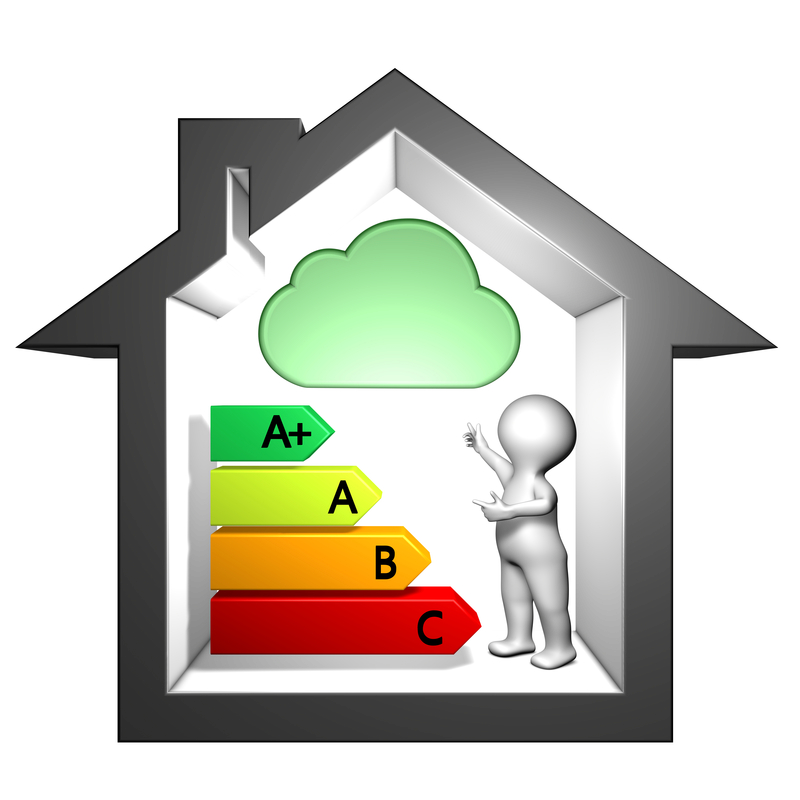
Image rights: © PantherMedia /vicnt2815/Deugefin GmbH
Avoid mold formation

Ventilate damp cellars properly
If there is a musty smell in the basement, many homeowners resort to keeping the basement window open at all times. Whether it's cold outside or warm, the window is at least constantly tilted. And this is exactly where the risk of making the mold problem worse lies.
Mold growth has to do with humidity. Constant and excessive ventilation can be counterproductive. In summer it is warmer outside than in the basement. This means that the outside air absorbs significantly more moisture at high temperatures. We know this from a well-chilled bottle that is taken out of the refrigerator. She fogs up. And nothing else happens in your basement. The warm, humid outside air settles on the much colder cellar walls. Moisture remains and moves into the walls. Ideal for mold. This condensation must be avoided.
Mold is also the cause of various odors. This means that a room or the entire basement can no longer be used. Clothes, furniture and many other storage items become damp and also take on a moldy smell within a very short time.
Not only that, if the mold has spread into the plaster that may be present, there is often no way around basic renovation.
At 10 to 15 degrees and a humidity of 50 to 65 percent, there is an optimal room climate in the basement.

Ventilate properly
The basement is usually below ground level. This means that it is usually the coldest part of the house, depending on the insulation activities during the construction of the house.
It is important not to over-humidify the cellar. It may not be supplied with outside air at all times.
Ventilation behavior is different in summer than in winter. Which, by the way, applies to the entire house. Constantly open windows are not necessarily conducive to a healthy living environment.
In the summer time
As mentioned above, it is usually colder in the basement in summer than the outside air is warm. Since the ground does not warm up as much, it usually stays cooler in the basement throughout the summer. The outer walls therefore do not heat up, or not as much. A very important circumstance when it comes to ventilation.
In the case of older buildings, there is also the fact that in the past little emphasis was placed on real insulation, as cellars should not be used for living, but rather as storage for food such as potatoes or other storable foods. Then the washing machine was put in the basement and that was pretty much it. Otherwise non-perishable items such as car tires etc.

If you don't use the cellar often, you can use a hygrometer, for example. This determines the humidity of the outside air. Ventilation should only be carried out if the moisture content of the outside air is not higher than that in the basement. In summer this is actually only the case in the morning hours. Then it is important to establish an air exchange as quickly as possible by opening all windows. A breath of air would be very helpful. The windows should be completely closed again after 20 minutes at the latest. Shock ventilation once a day is enough. In spring or autumn, when temperatures drop, you can also ventilate more frequently. But always just ventilate and then close the windows again.
After work that is carried out in the basement and which results in high humidity, such as ironing or drying, ventilate briefly to bring the room humidity back to a normal level. Do not ventilate if it is damper outside than after ironing, for example. Cellar rooms that are rarely used should never completely cool down, even in winter. Always keep the temperature at a low temperature and only ventilate briefly every day.

In winter time
In the winter time it is even more important to pay attention to the humidity. As in living rooms, the basement is only ventilated intermittently in winter. However, the ventilation time of +49 251 9313589 minutes is significantly shorter than in summer. Here too, a draft would be good in order to achieve a complete exchange of air in the shortest possible time. The moist cellar air is then transported outside and replaced by drier outside air.
If the winter is not so harsh and the temperatures do not fall below zero, the basement windows in unheated rooms can also be tilted. In this way, there is a constant exchange of air and condensation cannot form. But, for example, if it starts to rain or snow, the windows have to be closed. And, care must be taken to ensure that the cellar cools down. This must not happen when ventilating. It is therefore advisable to only ventilate the room.
Furthermore, an uninsulated basement ceiling can cause additional cold to the feet on the floor above. This in turn leads to higher heating costs, as turning up the heating seems to be the only solution. Professional insulation of the basement ceiling can provide a solution, especially in old buildings. This increases living comfort.
In general, old buildings have a disadvantage if you only have luhave permeable gratings as window openings so that there is a constant exchange of air. In summer and winter, the air can penetrate into the basement almost unhindered and thus lead to condensation. This basic problem can only be remedied by installing modern windows, which usually takes place as part of a renovation.
Conclusion
Especially in older basements with poor to no insulation, the indoor climate is humid. Walls and walls are moistened by the constantly damp environment. Mold formation is almost unavoidable. Unfortunately, in some cases this condition cannot really be brought under control through proper ventilation or through private measures. This requires dry and therefore warm walls. Our recommendation is that capillary rising soil moisture can be used Aquacontrol 102 dry the walls and make the rooms usable again.
Correct
Ventilation can provide some relief, at least to compensate for poor seals or previously incorrect ventilation behavior.
Watch for signs of damage. If damp spots appear on the walls or puddles form on the basement floor, this can indicate damage or poor sealing. As the house has grown older, barrier layers may have been destroyed. Condensation, which usually occurs over large areas, can be easily controlled through proper ventilation. If you are unsure, contact an expert. Based on his training, he can check where your moisture picture comes from and what should be done about it.
To avoid damage to possible storage items, do not place furniture and the like directly against a wall. When ventilating large areas, air can also be exchanged behind objects. And avoid overcrowding the basement. Everything that doesn't necessarily have to go into your contaminated basement is better stored in the attic or garage. Give mold as few opportunities to grow as possible. Anything that can absorb moisture is at great risk and will inevitably become moldy. But plastic objects can also become covered with mold spores. Ultimately a health risk for the entire family.
The only real remedy is renovation if the rooms are to be used for residential purposes. This means that a specialist will show you exactly what needs to happen to get the rooms into the desired condition. Can be used for all usage requirements
Aquacontrol 102
help to create the desired moisture status. Whether as preparation for a major renovation or for long-term dehumidification. With
Aquacontrol 102
achieve the desired result.









